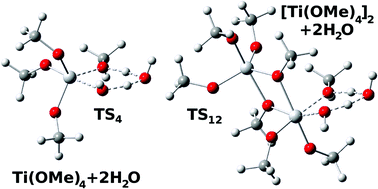Theoretical study of the mechanisms of the hydrolysis and condensation reactions of silicon and titanium alkoxides: similarities and differences†
Abstract
Stationary states for

- This article is part of the themed collection: Collection of articles dedicated to Professor David W. H. Rankin on the occasion of his retirement

 Please wait while we load your content...
Please wait while we load your content...